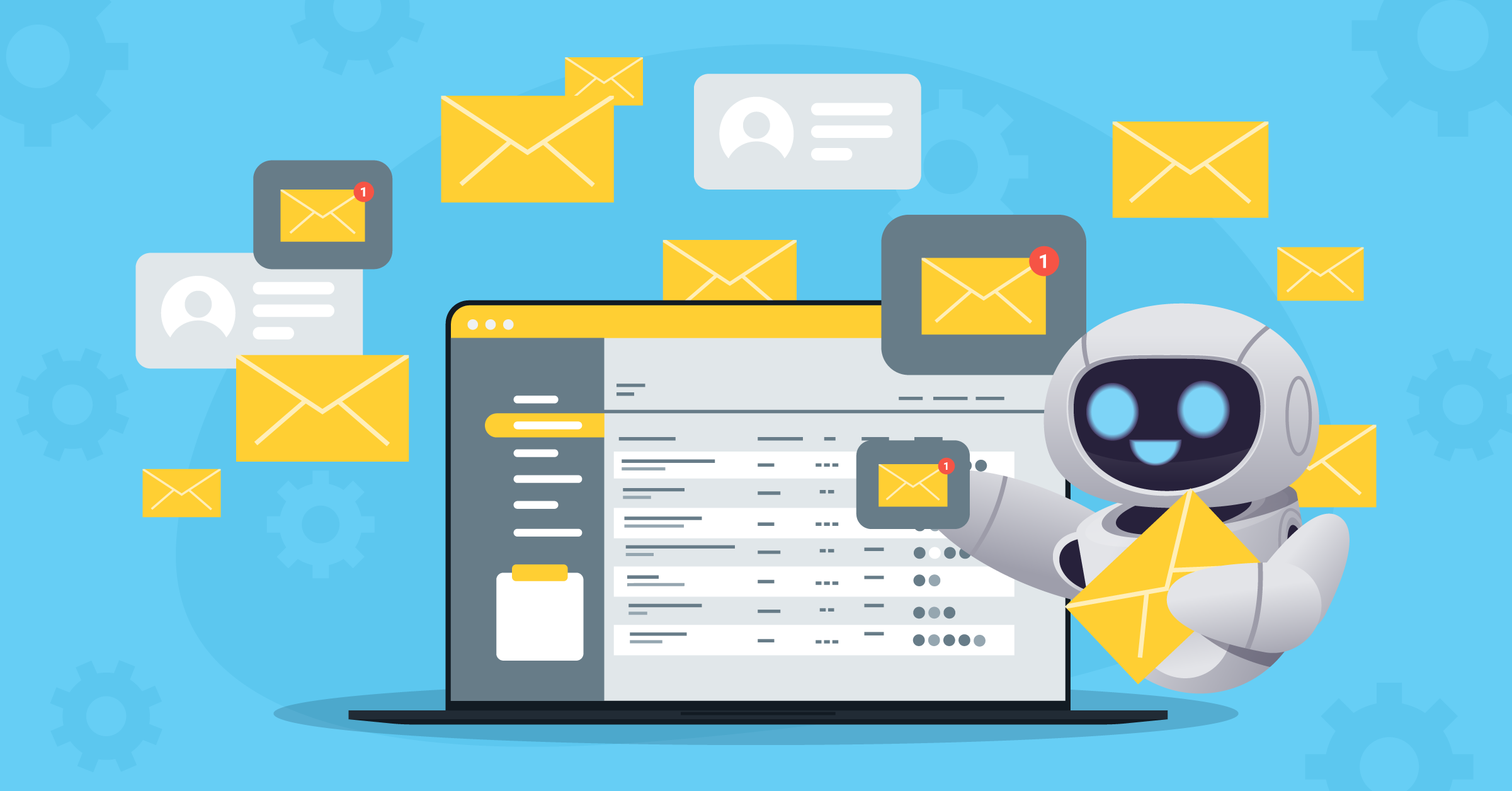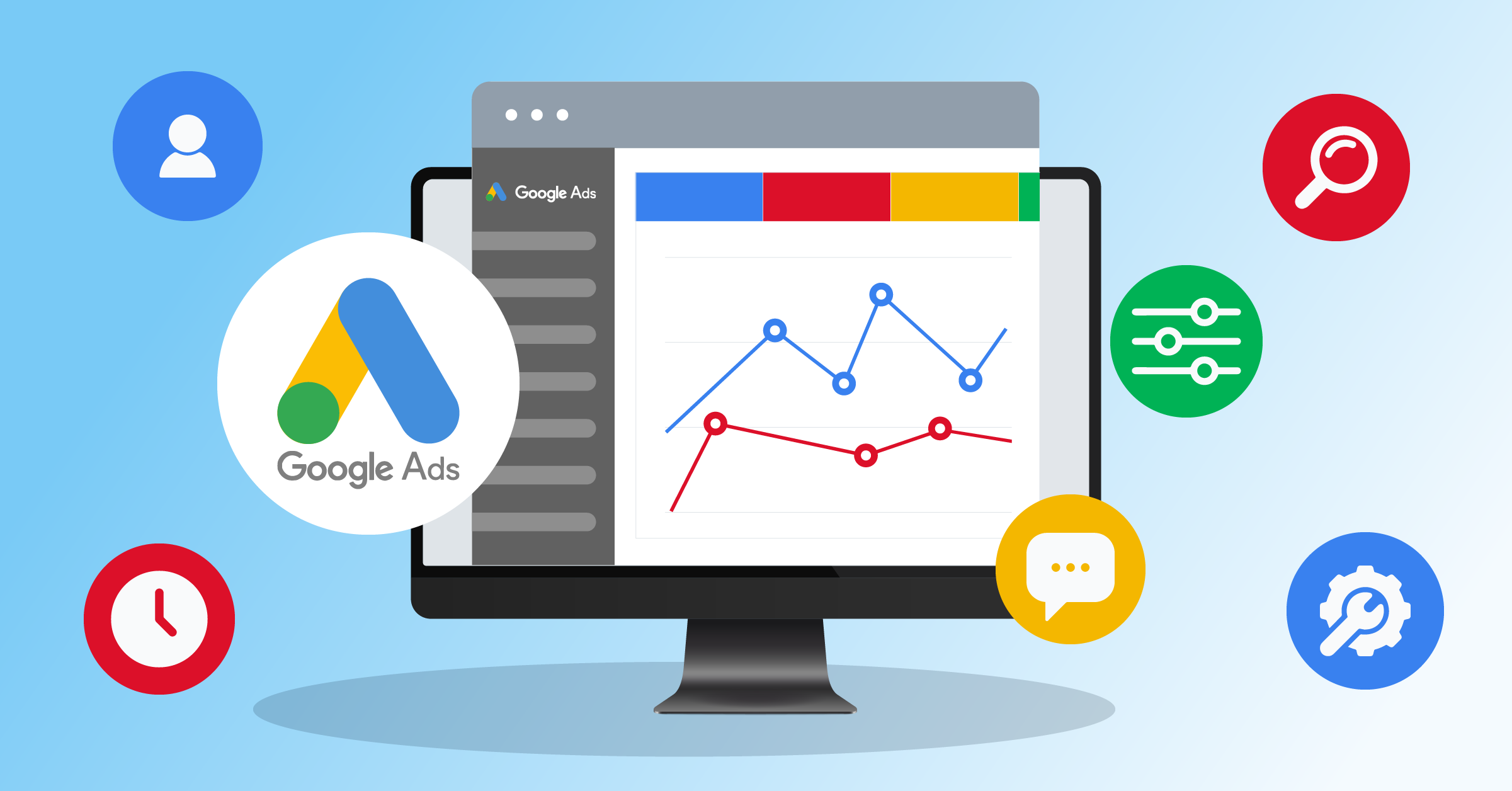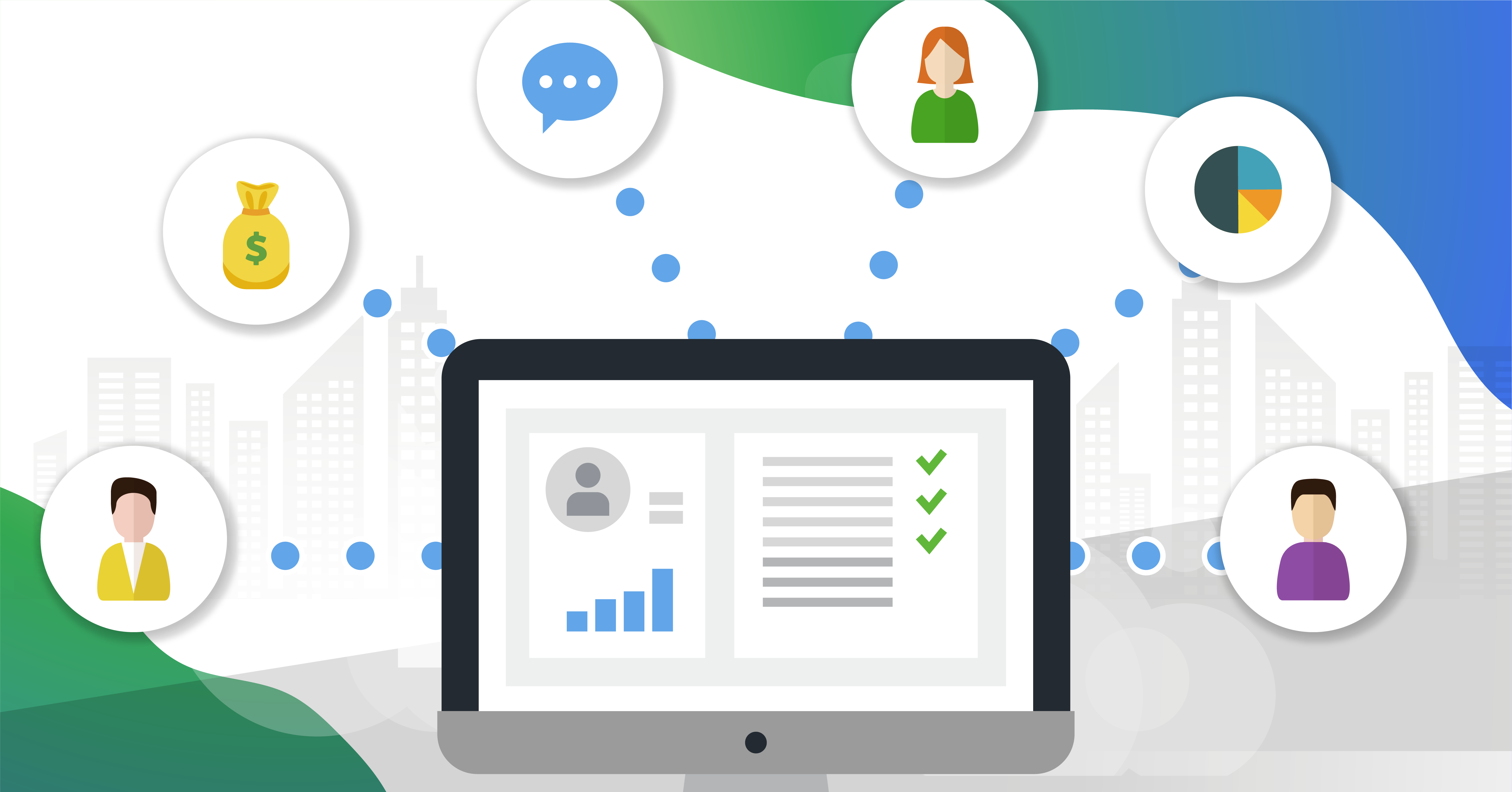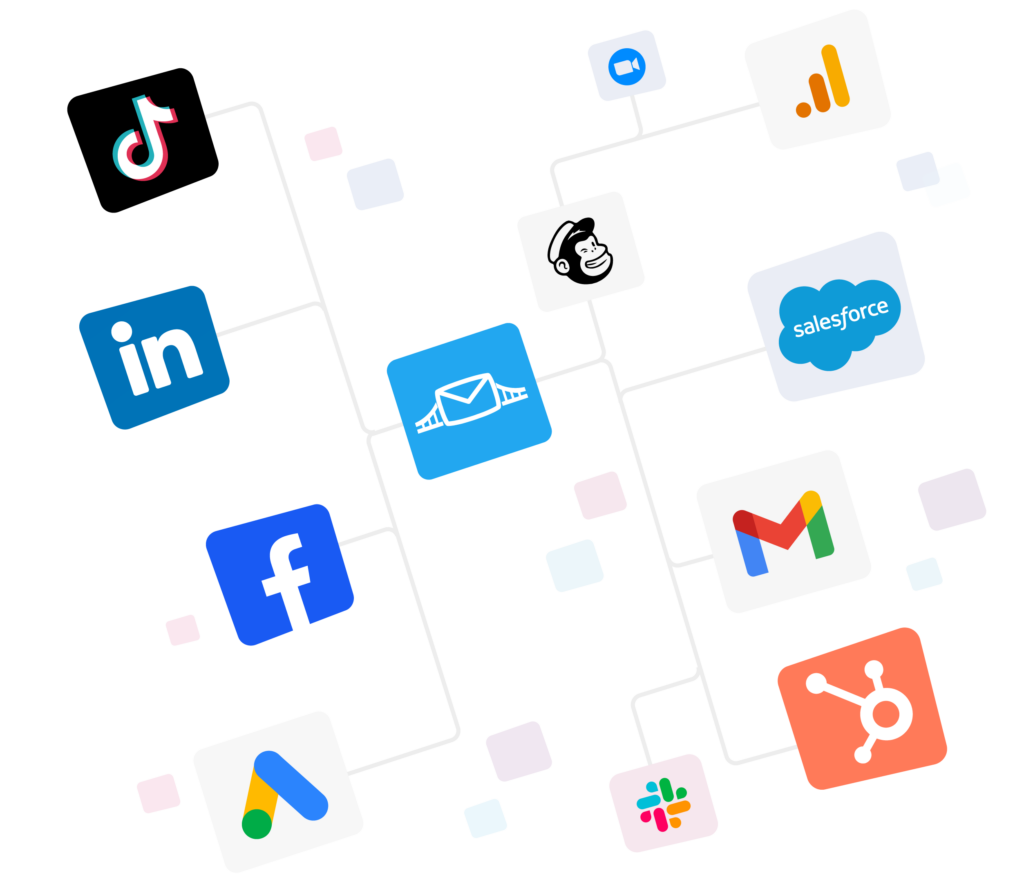
Unlike running email marketing campaigns manually, email automation can streamline your communication with your subscribers.
Most marketers use automation software to send emails because it enables them to send personalized and highly relevant emails based on predefined triggers.
And considering that the majority of email revenue comes from triggered personalized campaigns, it is only logical to use automation.
- What is email marketing automation?
- Benefits of email marketing automation
- How to automate emails
- Developing an email marketing automation strategy
- Email marketing automation best practices for 2025
- Email marketing automation workflow examples
- Automate your email marketing campaigns via LeadsBridge
- What to take away from this?
In this article, you can learn how to automate emails and take your marketing to the next level. Additionally, we’ll introduce a few must-have tools to bridge the gap in your email marketing automation strategy, such as:
What is email marketing automation?
Before we discuss tools and strategies, let’s take a look at what email marketing automation is.
Email marketing automation lets you use pre-set rules to trigger email messages and personalize communications based on specific actions users take or don’t take. To improve deliverability and avoid spam filters, leveraging email warmup tools before launching automated campaigns can significantly increase your chances of landing in your recipients’ inboxes.
You can automate welcome emails for new signups, send reminders for subscription renewals, suggest products, run an email deliverability test, and many other workflows.
Benefits of email marketing automation
Customers prefer tailored content over generic content. Automated emails consistently outperform, driving ten times higher click-through rates than boring broadcast emails.
Here’s more on why you need automation:
- Using AI-driven insights and behavioral triggers, you can personalize each message automatically and that’s what converts browsers into buyers.
- Accessing real-time data helps you dynamically segment your audience based on behavior, preferences, or lifecycle stage and fire off the perfect email when it matters most.
- Automating workflows reduces friction, saves labor costs, and allows your team to focus on higher-value activities.
- Communicating based on each customer’s unique purchase journey and lead-nurturing path. Anything from the welcome series to nurturing emails and reactivation campaigns.
How to automate emails
A high-functioning marketing ecosystem has a connected stack that includes data from:
- Lead generation
- Lead management
- Customer nurturing
- And all other internal systems.
Utilize various email automation workflows in conjunction with third-party integrations to streamline the entire process.
Wondering how to automate your emails and put your communication on autopilot? To start with, here are some workflows you’d want to automate.
Choosing an email automation software
There are plenty of email automation tools out there, but not all fit your unique business needs. First, choose a platform aligned with your goals. Then comes the crucial step: connecting it to your data sources (like your CRM, spreadsheets, or other systems).
That’s where LeadsBridge steps in. It seamlessly integrates your email marketing platform with your advertising and data tools, creating a bridge that keeps your entire automated workflow in sync and running smoothly.
Defining your email campaign recipients
Who is on the receiving end of your emails?
Answering this question helps you understand your email marketing strategy and the related workflows. Categorizing your email recipients involves several factors, including lifecycle stages, upsell campaigns, existing customers, etc.
Moreover, automating segmentation can help you figure out the messaging you need to create for each segment.
Determining your email campaign’s goal
Your emails must be in alignment with your marketing strategy. So you need to plan the emails’ content, their purpose, and where they guide your contacts to. However, this is the centerpiece of your marketing efforts and an immensely important step.
Defining enrollment benchmarks
Enrollment benchmarks are the rules and regulations you set to specify which contacts enter your automatic workflows.
You can create triggers that perform this action in several ways. For instance, when a contact submits an instant form or someone clicks on your demo request link.
Outlining the desired automation processes
Specify the actions you want to automate and also achieve the target outcome. These could be sending an email based on a specific trigger, scheduling routine subscription renewal reminders, or updating email listings.
Specifying your email campaign assets
Next, you’ll need to specify and refine your email assets. Once you have created your clear-cut campaign assets, your automation software does the rest.
Setting up your email automation and testing
Automation testing tools help you see how your emails perform on a micro level, allowing you to optimize them accordingly.
Once you check all the workflow charts, it is time to send them out. Like any other automation workflow, monitor the process to identify any irregularities.
Additionally, make sure to revise your triggers, content messaging, and workflows if there are any changes in the marketing strategy.
Developing an email marketing automation strategy
Here are the key elements of a winning 2025 strategy:
- Design processes that scale. For example, set up customer feedback loops to continuously improve campaigns and measure impact over time.
- Not every CRM fits every business. Pick one that integrates seamlessly with your stack and pair it with email security tools like DMARC to protect your domain and maintain trust.
- Manage leads with tactics. Align your ads, landing pages, forms, and email flows to capture and nurture prospects effectively.
- Use data to understand what motivates customers. Then, feed that insight into your email strategy for better timing, messaging, and personalization.
Content marketing email automation strategy
Implementing a content marketing email automation strategy can significantly enhance engagement and drive conversions. In 2025, automation is about delivering the right message at the perfect moment, at scale.
A good strategy should include all these factors.
- Granular segmentation: Use AI-powered segmentation based on interests, behavior, and demographics prior to sending out any emails.
- Personalize content: Your data is your guide for delivering highly relevant, dynamic content that is perfectly tailored to each subscriber.
- Trigger timely emails: Send automated emails based on real-time actions like site visits, downloads, or abandoned carts, to drive conversions.
- Analyze and Optimize: Continuously track key metrics (opens, clicks, conversions) and adjust strategies for maximum ROI.
To support these practices, consider the following statistics. There is about $36-$40 in revenue for every $1 spent. Moreover, automated flows earn approximately 30 times more than one-off email communications.
An email automation tool as part of your strategy
Mailchimp email marketing automation
Mailchimp’s Customer Journey Builder lets you design multi-step flows that branch on behavior, tags, or predictive “likely-to-buy” scores.

Out-of-the-box recipes cover:
- Welcome series
- O Product retargeting
- Abandoned-cart recovery
- Post-purchase follow-up
All of these are governed by Send-Time Optimization to hit the individual inbox when engagement probability peaks.
Connecting Mailchimp with your advertising platforms via LeadsBridge means every new lead from Facebook lead ads, TikTok forms, Google Ads Extensions, or your CRM lands in the right Mailchimp audience in real time.
The result is no-lag personalization and the higher ROI that automated workflows already deliver.
That’s where LeadsBridge steps in. It seamlessly integrates your email marketing platform with your advertising and data tools, creating a bridge that keeps your entire automated workflow in sync and running smoothly.
Email marketing automation with Klaviyo
Klaviyo’s strength is event-driven “Flows.” Popular automations include:
- Browse-abandonment nudges
- Dynamic cart-abandonment sequences
- VIP or birthday rewards
- Predictive replenishment emails that fire when the platform’s AI forecasts the next order date.
Klaviyo layers email and SMS in the same flow, uses catalog-based product recommendations, and surfaces churn-risk scores so you can trigger win-back series before revenue slips away.

With LeadsBridge, first-party data from social lead-gen ads or offline sign-ups syncs directly into Klaviyo profiles, automatically updating segments and firing the correct flow the moment someone converts.
Email marketing automation best practices for 2025
Customers are now used to moving fluidly between email, SMS, social, and web. Sync your automation with all touchpoints, creating a consistent, context-aware experience that boosts retention across channels.
Here are some ways to do that:
- AI-driven personalization 2.0
As of 2025, AI models predict intent, recommend products, and optimize send times at an individual level. And they can do much more in the months to come.
Use behavioral and predictive analytics to deliver content your subscribers actually want and when they want it.
- Interactive and shoppable emails
Make emails actionable: embed polls, quizzes, carousels, and even in-email checkout. Interactive and transactional elements engage while shortening the path to conversion.
Keep in mind that these format might have limited support.
- Privacy-first and trust-centric communications
With privacy regulations tightening, prioritize consent, transparency, and secure data handling. Use automation to honor preferences while maintaining personalization without overstepping boundaries.
- Continuous learning and optimization
Again, let AI do the heavy lifting for you. Analyze performance in real-time, automatically adjusting segments, creative, and cadence based on what’s working and what isn’t.
Email marketing automation workflow examples
So, what are some good examples of automated email workflows? Let’s go through some high-performing examples.
- Subscriber welcome workflow to trigger subscriptions to your blog.
Everyone loves a good welcome, and that includes your new blog subscribers. This is also valid for your newsletter, webinar registrants, or app subscribers. So send your incoming leads a welcome email and offer insights on what comes next and what they can expect.
- New user training workflow to trigger lead lifecycle stages.
Everyone loves a good welcome, and that includes your new blog subscribers. This is also valid for your newsletter, webinar registrants, or app subscribers. So send your incoming leads a welcome email and offer insights on what comes next and what they can expect.
- Lead nurturing workflow to trigger multiple top-of-the-funnel conversion events.
You can set up event workflows to trigger registrations or attendance and aid this process. For instance, send your webinar attendees a welcome email with a CTA for more information.
Alternatively, send emails with mid-funnel content to new leads to direct them toward becoming qualified leads (MQLs) or customers.
- Internal sales rep notification workflow to trigger the bottom-of-the-funnel page views.
Define automated workflows to inform your staff to reduce conversion friction or increase customer satisfaction. So, set triggers to send an automated internal email notification to your sales rep to notify them of high-value user activities.
This practice also contributes to achieving speed-to-lead and increases the relevance of the content you send to your leads.
Here’s how to connect Facebook Lead Ads to Email Notification via LeadsBridge.
- Abandoned shopping cart workflow to trigger shopping cart abandonment.
Set up abandoned cart workflows that trigger an email to remind users of their unfinished purchases. In addition, offer a limited-time discount code or incentive to encourage them to complete the transaction.
- Upsell and cross-sell workflow to trigger post-purchase conversions.
Build workflows for upselling or cross-selling to your existing customers. Does that give you any email automation ideas?
Create lists of contacts who purchase a specific product and assemble automatic list updates to streamline the process. Then, design workflows encourage upsells or suggest other products/ services.
Automate your email marketing campaigns via LeadsBridge
Even with the most elaborate email marketing platforms, you can easily jeopardize your marketing efforts if you’ve not integrated them fully into your marketing system.
Fortunately, LeadsBridge can offer you integrations to create a fully integrated system by bridging the gap between your email marketing and other tools.
That means transferring data between different points, such as your CRM, advertising platforms, email, and event management tools.
Advantages of using LeadsBridge integration
Even with the most elaborate email marketing platforms, you can easily jeopardize your marketing efforts if you’ve not integrated them fully into your marketing system. Besides the shortcomings in communication, you’ll find it difficult to measure your performance and get accurate insights into your campaigns.
Fortunately, LeadsBridge can offer you integrations to create a fully integrated system by bridging the gap between your email marketing with other tools. Then, you can streamline the data transfer between different points such as your CRM, advertising platforms, email, and event management tools.

LeadsBridge also offers a free email receipt feature that helps notify your staff to automatically track your leads as they come in. This option is available for any of our integrations. All you have to do is sign up and start using LeadsBridge for free.
Other benefits of using LeadsBridge include:
- turning contacts gathered from different channels into subscribers;
- updating your lead list with survey form entries automatically;
- streamlining segmentation to place your subscribers into different categories;
- setting up drip campaigns to send emails automatically;
- And, automating workflows to track your unsubscribers and cold leads.
Top integrations to connect your email workflow software and marketing tools
- ActiveCampaign automation
ActiveCampaign automation services are great for running email campaigns on autopilot. The system uses this data to create frictionless email communication and move prospects down the funnel further.
- Constant Contact automation
Constant Contact email automation is perfect for communications related to ecommerce. It’s a budget-friendly app that allows you to target customers based on purchase behaviors and deliver personalized and relevant messages.
- Klaviyo email automation
If you need to manage numerous email campaigns and audience lists at once, this platform is for you. Klaviyo automation platform lets you design attractive email templates and test out responsive emails and newsletters to see how they perform.
- Email Notification
Email Notification is one of the best email workflow software for B2B businesses. It helps funnel segmentation and easy trigger definition. Using this app’s easy-to-use features, you can create target audiences and reach your customers more effectively.
What to take away from this?
Understanding how to automate emails boosts the efficiency of your sales and marketing teams. Moreover, it offers valuable insights to optimize your email marketing strategy, personalize email content, and ultimately enhance the performance of your email campaigns.
Automate your entire email marketing workflow and connect your favorite marketing apps through LeadsBridge. Discover all the possible integrations here.




























